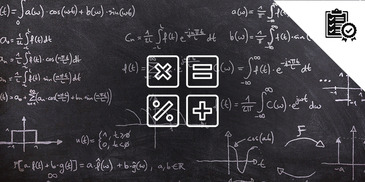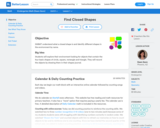
Students continue to build their graphing skills. They experience a real world application of graphing by organizing survey results.
- Subject:
- Mathematics
- Material Type:
- Lesson Plan
- Provider:
- BetterLesson
- Date Added:
- 12/01/2022


Students continue to build their graphing skills. They experience a real world application of graphing by organizing survey results.

Students will tell if a shape is 2-dimensional or 3-dimensional.

Students use both area and perimeter to work with geometric shapes.

Variety is the spice of life and the concept of the day as students fill the same pattern block outline three different ways.

Students use knowledge about fractions and decimals to show what they know on their assessment.

Students show what they know about equations and inequalities.

Students define rate and give examples of how they can use rates.

Which drink has the strongest caffeine concentration? Students work on this problem for the second of two lessons.

Students understand what a closed shape is and identify different shapes in the environment by name.

The three types of angles, right, acute, and obtuse, exist in our everyday surroundings. Students find these angles using classroom items.

Students will be able to compare groups of objects to decide if they are equal with this lesson. Included are pictures and videos of the lesson in action, worksheets, and a SMART Board resource.

Students can solve real world problems using their understanding of multiplication and division and the relationship they share.

Students find the area of rectangles, triangles, parallelograms, and trapezoids by using formulas or by composing into rectangles or triangles.

Students find the area of parallelograms by using square units and the area formula.

Students use the area formula for rectangles to solve real world and mathematical problems.

Students find the area of a trapezoid by decomposing it into triangles and using the formula

Students find the area of a triangle using square units and the area formula.

Students tell how long an object is by measuring it using paper clips and comparing it to other objects measured with the same non-standard unit of measurement.

Students sort objects according to whether they sink or float.

Students will compare sets of numbers using symbols for greater than, less than, and equal to.